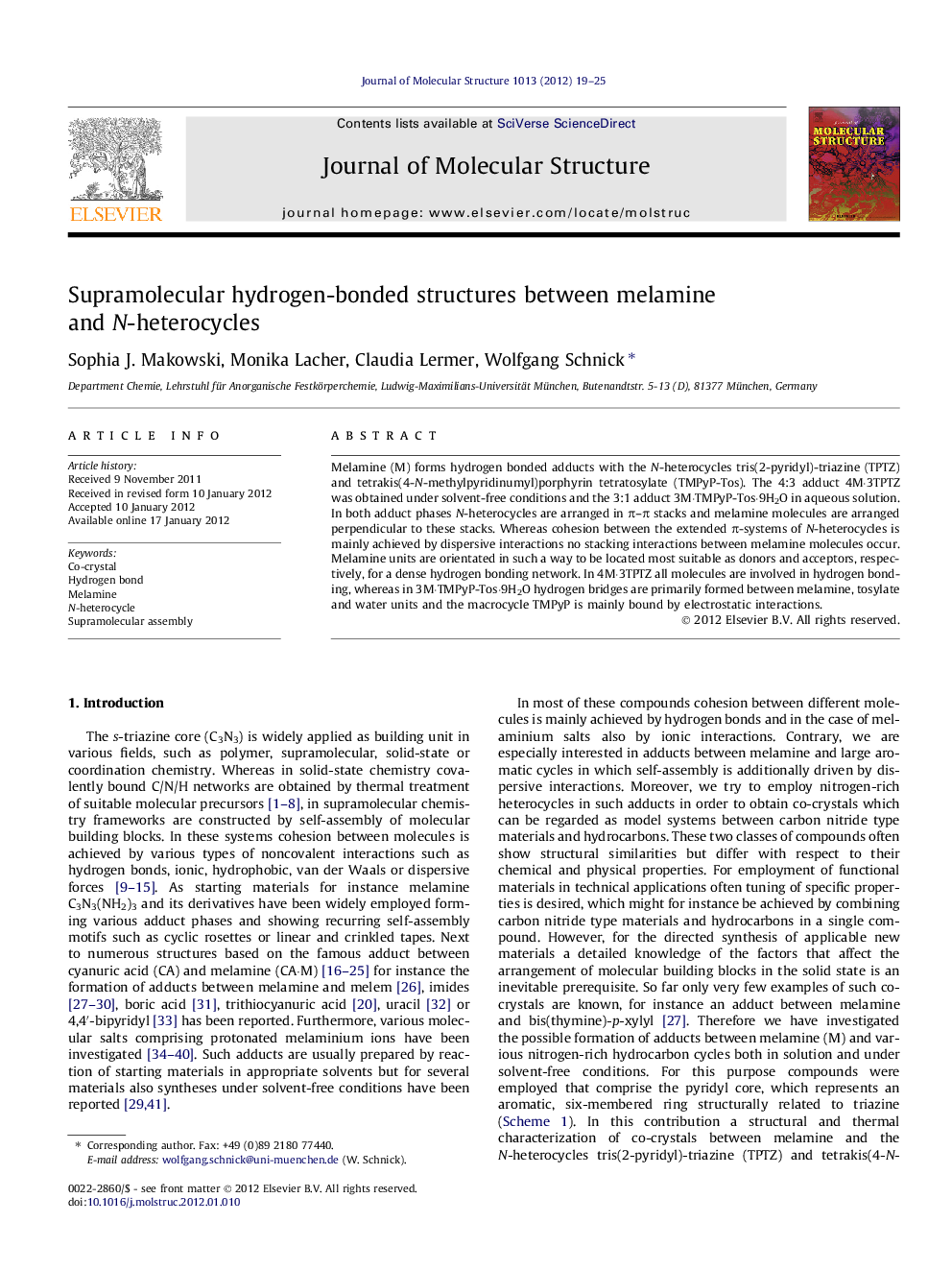| Article ID | Journal | Published Year | Pages | File Type |
|---|---|---|---|---|
| 1409874 | Journal of Molecular Structure | 2012 | 7 Pages |
Melamine (M) forms hydrogen bonded adducts with the N-heterocycles tris(2-pyridyl)-triazine (TPTZ) and tetrakis(4-N-methylpyridinumyl)porphyrin tetratosylate (TMPyP-Tos). The 4:3 adduct 4M·3TPTZ was obtained under solvent-free conditions and the 3:1 adduct 3M·TMPyP-Tos·9H2O in aqueous solution. In both adduct phases N-heterocycles are arranged in π–π stacks and melamine molecules are arranged perpendicular to these stacks. Whereas cohesion between the extended π-systems of N-heterocycles is mainly achieved by dispersive interactions no stacking interactions between melamine molecules occur. Melamine units are orientated in such a way to be located most suitable as donors and acceptors, respectively, for a dense hydrogen bonding network. In 4M·3TPTZ all molecules are involved in hydrogen bonding, whereas in 3M·TMPyP-Tos·9H2O hydrogen bridges are primarily formed between melamine, tosylate and water units and the macrocycle TMPyP is mainly bound by electrostatic interactions.
► Formation of co-crystals between melamine and N-heterocycles by self-assembly. ► Analysis of different types of noncovalent interactions. ► Assembly of melamine is mainly determined by hydrogen bonding. ► Varying degrees of stacking interactions for N-heterocycles. ► Comparison of thermal behavior of the co-crystals and that of their components.
